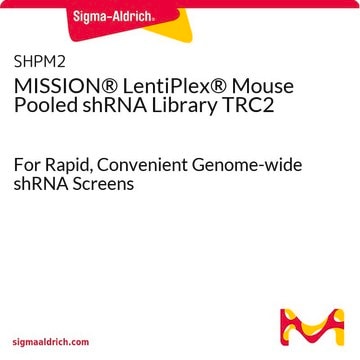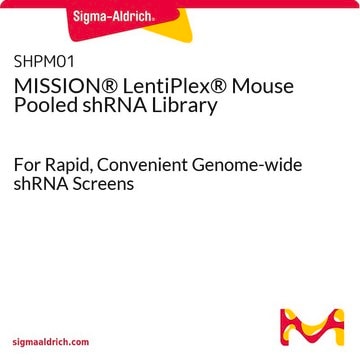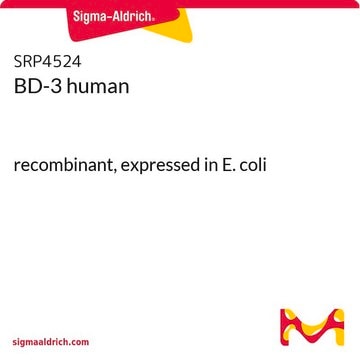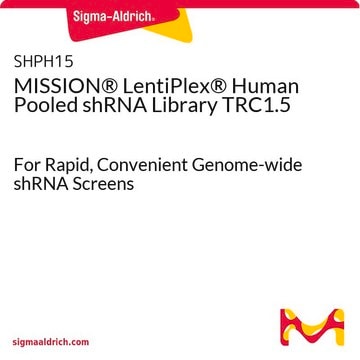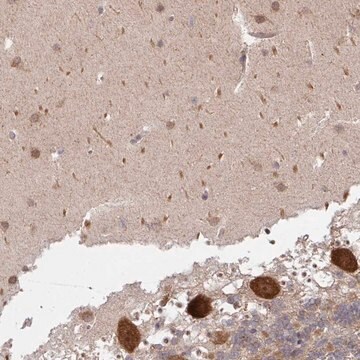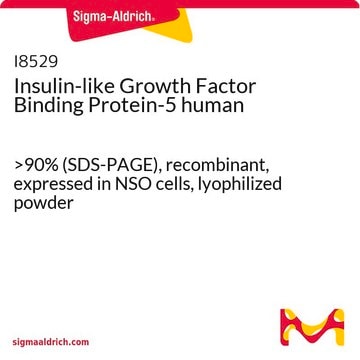SBVT12
SB-mouseBsep-Sf9
membrane preparation for Vesicular Transport Assays, recombinant, expressed in baculovirus infected Sf9 cells
Sinônimo(s):
Bile salt export pump, Bsep, Bsep mouse vesicles, mouse Abcb11
Faça loginpara ver os preços organizacionais e de contrato
About This Item
Código UNSPSC:
12352202
Produtos recomendados
recombinante
expressed in baculovirus infected Sf9 cells
forma
liquid
concentração
5 mg/mL
cor
off-white
nº de adesão UniProt
Condições de expedição
dry ice
temperatura de armazenamento
−70°C
Informações sobre genes
mouse ... Abcb11(27413)
Descrição geral
Membrane Preparations for Vesicular Transport Assays (VT) are suitable for general drug-efflux transporter interaction studies. Both substrate and inhibitor interactions can be assessed using vesicles. The success of substrate interaction studies strongly depends on the passive permeability of the compound. High permeability substrates might not be detected. Control Membranes with no-, or significantly lower transporter activity are also available.
Aplicação
In the vesicular transport assay so-called "inside-out" membrane vesicles containing ABC transporters are applied. Incubating substrates of the respective efflux transporter in the presence of the inverted membrane vesicles and ATP will allow measuring accumulation of the substrates into the vesicles. In many cases radiolabeled reporter substrates are used but recently SOLVO developed the new PREDIVEZTM Vesicular Transport Kits that use fluorescent reporter substrates.
The standard vesicular transport assay is an inhibitory assay performed with cold test articles. This assay provides information on any interaction between the ABC transporter and the test article. The transport of the reporter substrate is measured in the presence of the test article (typically in 7 concentrations) and IC50 is defined as the concentration inhibiting the transport of the reporter substrate by 50%.
Should radiolabeled form of the investigated compound or adequate analytical methods (LC/MS, HPLC) be available, the vesicular transport assay may be performed in a direct format without the reporter substrate and may identify substrate nature of the test article. The vesicular transport substrate assay is a low throughput assay. It is suitable for low permeability test compounds as high permeability compounds may escape from the vesicles through the lipid bilayer.
The standard vesicular transport assay is an inhibitory assay performed with cold test articles. This assay provides information on any interaction between the ABC transporter and the test article. The transport of the reporter substrate is measured in the presence of the test article (typically in 7 concentrations) and IC50 is defined as the concentration inhibiting the transport of the reporter substrate by 50%.
Should radiolabeled form of the investigated compound or adequate analytical methods (LC/MS, HPLC) be available, the vesicular transport assay may be performed in a direct format without the reporter substrate and may identify substrate nature of the test article. The vesicular transport substrate assay is a low throughput assay. It is suitable for low permeability test compounds as high permeability compounds may escape from the vesicles through the lipid bilayer.
forma física
Supplied as frozen membrane vesicles, containing 5 mg/ml membrane protein, labeled with volume, catalog number (transporter) and date of production.
Informações legais
Distributed for SOLVO Biotechnology, Inc.
produto relacionado
Nº do produto
Descrição
Preços
Código de classe de armazenamento
10 - Combustible liquids
Classe de risco de água (WGK)
WGK 1
Ponto de fulgor (°F)
Not applicable
Ponto de fulgor (°C)
Not applicable
Certificados de análise (COA)
Busque Certificados de análise (COA) digitando o Número do Lote do produto. Os números de lote e remessa podem ser encontrados no rótulo de um produto após a palavra “Lot” ou “Batch”.
Já possui este produto?
Encontre a documentação dos produtos que você adquiriu recentemente na biblioteca de documentos.
Ismael R Barosso et al.
PloS one, 7(11), e50711-e50711 (2012-12-05)
Estradiol 17ß-D-glucuronide (E17G) induces acute cholestasis in rat with endocytic internalization of the canalicular transporters bile salt export pump (Abcb11) and multidrug resistance-associated protein 2 (Abcc2). Classical protein kinase C (cPKC) and PI3K pathways play complementary roles in E17G cholestasis.
Andrés E Zucchetti et al.
Molecular biology of the cell, 22(20), 3902-3915 (2011-08-26)
In estradiol 17β-d-glucuronide (E17G)-induced cholestasis, the canalicular hepatocellular transporters bile salt export pump (Abcb11) and multidrug-resistance associated protein 2 (Abcc2) undergo endocytic internalization. cAMP stimulates the trafficking of transporter-containing vesicles to the apical membrane and is able to prevent internalization
Jasminder Sahi et al.
Chemico-biological interactions, 159(2), 156-168 (2005-12-17)
CI-1034, an endothelin-A receptor antagonist was being developed for pulmonary hypertension. Drug-drug interaction studies using human hepatic microsomes were conducted to assess CYP1A2, CYP2C9, CYP2C19, CYP3A4 and CYP2D6 inhibition potential; CYP3A4 induction potential was evaluated using primary human hepatocytes. CI-1034
Emese Kis et al.
Toxicology in vitro : an international journal published in association with BIBRA, 26(8), 1294-1299 (2011-11-29)
Bile salt export pump (BSEP, ABC11) is a membrane protein that is localized in the cholesterol-rich canalicular membrane of hepatocytes. Its function is to eliminate unconjugated and conjugated bile acids/salts from hepatocyte into the bile. In humans there is no
Xingguo Cheng et al.
Biochemical pharmacology, 74(11), 1665-1676 (2007-09-28)
Sodium-taurocholate cotransporting polypeptide (Ntcp) and bile salt export pump (Bsep) are two key transporters for hepatic bile acid uptake and excretion. Alterations in Ntcp and Bsep expression have been reported in pathophysiological conditions. In the present study, the effects of
Nossa equipe de cientistas tem experiência em todas as áreas de pesquisa, incluindo Life Sciences, ciência de materiais, síntese química, cromatografia, química analítica e muitas outras.
Entre em contato com a assistência técnica
